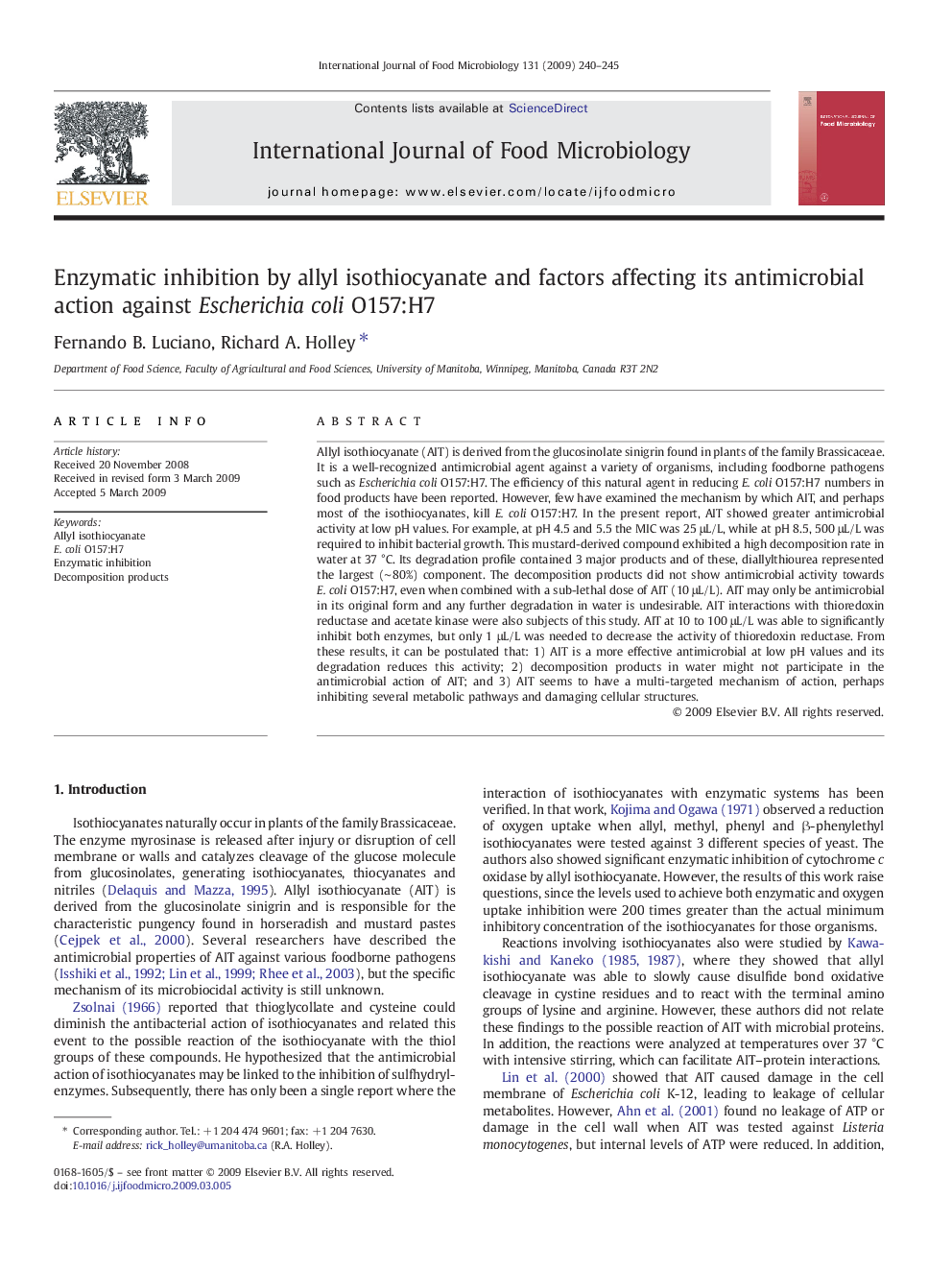| Article ID | Journal | Published Year | Pages | File Type |
|---|---|---|---|---|
| 4369440 | International Journal of Food Microbiology | 2009 | 6 Pages |
Allyl isothiocyanate (AIT) is derived from the glucosinolate sinigrin found in plants of the family Brassicaceae. It is a well-recognized antimicrobial agent against a variety of organisms, including foodborne pathogens such as Escherichia coli O157:H7. The efficiency of this natural agent in reducing E. coli O157:H7 numbers in food products have been reported. However, few have examined the mechanism by which AIT, and perhaps most of the isothiocyanates, kill E. coli O157:H7. In the present report, AIT showed greater antimicrobial activity at low pH values. For example, at pH 4.5 and 5.5 the MIC was 25 μL/L, while at pH 8.5, 500 μL/L was required to inhibit bacterial growth. This mustard-derived compound exhibited a high decomposition rate in water at 37 °C. Its degradation profile contained 3 major products and of these, diallylthiourea represented the largest (∼ 80%) component. The decomposition products did not show antimicrobial activity towards E. coli O157:H7, even when combined with a sub-lethal dose of AIT (10 μL/L). AIT may only be antimicrobial in its original form and any further degradation in water is undesirable. AIT interactions with thioredoxin reductase and acetate kinase were also subjects of this study. AIT at 10 to 100 μL/L was able to significantly inhibit both enzymes, but only 1 μL/L was needed to decrease the activity of thioredoxin reductase. From these results, it can be postulated that: 1) AIT is a more effective antimicrobial at low pH values and its degradation reduces this activity; 2) decomposition products in water might not participate in the antimicrobial action of AIT; and 3) AIT seems to have a multi-targeted mechanism of action, perhaps inhibiting several metabolic pathways and damaging cellular structures.
